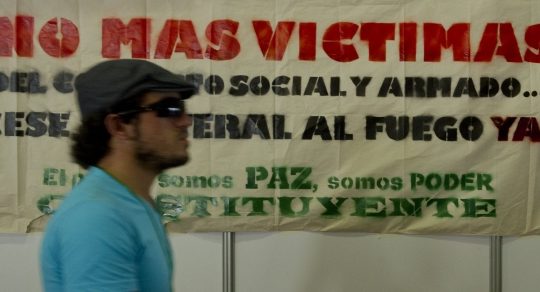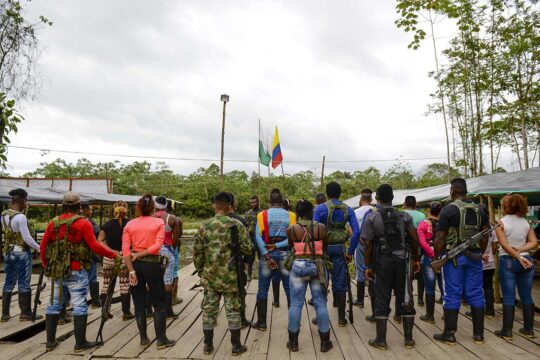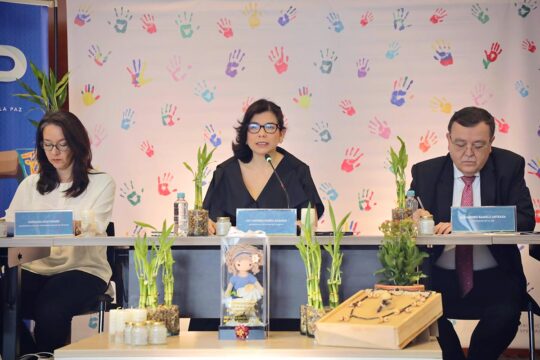Doris Salcedo, considered to be one of Colombia’s most important artists, only speaks rarely to the press. This solitude feeds her work, which is a constant quest around violence and absence. It is palpable in her work. Her sculptures, made out of everyday objects such as chairs, tables or shoes, are haunted by the scars of war. Doris Salcedo's work is on exhibition at the Guggenheim Musem in New York until October 12.
Her native Colombia, ravaged by civil conflict for more than half a century, is not always mentioned in the presentation of her pieces, but it is nevertheless her main source of inspiration. In 1985, Doris Salcedo was in Bogota, a few streets away from the Justice Palace, when it was attacked by the M19 rebel group (which disappeared in 1993). A few hours later it was taken by the security forces. The tanks destroyed the walls, the offices were burned and dozens of people killed. Many of those who came out alive were tortured to death and then buried in the grounds of a military training school. She said a few years later that this event had made her realize violence has no limits.
24,000 Candles
In 2002, Doris Salcedo suspended dozens of chairs on the roof of the reconstructed building. These chairs, which cast their shadows over the façade, symbolize lives broken by the attack and repression. The Justice Palace case, in which generals were implicated, has still not been resolved. In 2007, she installed 24,000 candles in the main square of the Colombian capital as a sign of mourning after the murder of 11 hostages by Marxist Armed Revolutionary Forces of Colombia (FARC) rebels.
While the meaning of some of her works is clear, other more subtle ones resonate from a deep understanding of suffering. Doris Salcedo has acquired this alongside Colombian victims that she has met during her life. This has given rise to poetic and poignant pieces. In her Atrabiliarios work, created in the 1990s, she evokes all that is left of the dead, who were sometimes found in mass graves years later. Shoes that belonged to disappeared persons are placed in 20 niches, closed over by a translucent animal membrane sewn onto the wall. Piles of shirts stiffened with plaster and perforated by a steel rod symbolize the long wait of the wives who continue to iron the clothes of men who are no longer there. Empty furniture, on which she is constantly reworking, speak of loss and abandonment. Their broken or reassembled frames, through which shoots of grass sometimes grow, are a metaphor for brutality, but also for the resistance of life.
Shibboleth
“You cannot live in a place steeped in violence and behave as if everything was normal,” says Doris Salcedo, whose work has become more universal over the years. In her 2007 work Shibboleth, an enormous hole sculpted in the floor of the Tate Gallery, she evokes the segregation and racism facing immigrants in Europe. This monumental creation propelled her front stage on the world artistic scene. In 2010, she was the first woman to receive the prestigious Velazquez prize given by the Spanish Ministry of Culture.
Doris Salcedo recognizes that her work does not console the families, nor make reparation for injustices, but she believes art provides a space for reflection that can give victims back their dignity. In an interview a few years ago with the weekly publication Semana, she said she saw herself as a sort of agent against forgetting. “I have met people who have had the generosity to share their pain with me,” Salcedo told the paper. “This pain is something that is constantly relived. I think it transforms our relation to reality. The distance between them and me disappears, so I feel their pain, it touches me on the deepest level. If I manage to get the art (born of this exchange) circulated in the heart of society, this pain will also reach the heart of society and so they will become the leading actors in this society.” Such work is indispensable in an often indifferent Colombia.







